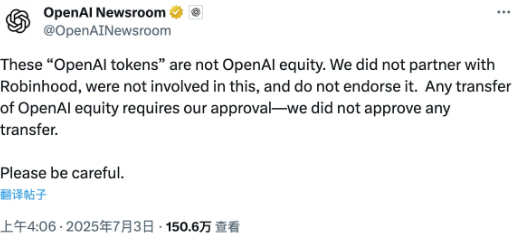
Positive Reviews: Strategic Adjustments Showcase Resilience, and Innovative Exploration Unleashes the Potential of the Low – tier Markets
Lawsons China’s slowdown in expansion may seem like “bowing to reality” on the surface, but in fact, it is a rational response to the market environment. The strategic adjustments and innovative exploration behind it demonstrate the adaptability and resilience of foreign convenience store brands in the Chinese market.
Firstly, the adjustment of goals reflects respect for market laws. When Lawsons proposed the goal of “10,000 stores by 2025” in 2020, the Chinese convenience store industry was in a period of rapid expansion. Driven by capital, various brands were seizing market shares. However, after 2023, the industry environment changed significantly: the “2025 China Convenience Store Development Report” shows that in 2024, the industry faced problems such as a decrease in passenger flow, a decline in the average customer spending, and a drop in single – store revenue. The average daily sales of a single store were only 4,634 yuan, and the “scale effect” brought by expansion was offset by the diverted single – store revenue. Lawsons’ adjustment of the goal to 12,000 stores by 2031 essentially means shifting from “speed priority” to “quality priority”, avoiding the deterioration of single – store profitability due to blind expansion. This “lowering of the target” is actually a responsible approach for long – term healthy development.
Secondly, the exploration of the low – tier markets and the “Mini – Station Model” provides a differentiated expansion sample for the industry. In the past, 80% of Lawsons’ stores were concentrated in first – and second – tier cities. After the high – tier markets became saturated, penetration into third – tier and lower – tier cities was an inevitable choice. Its opening of franchise opportunities in fourth – tier cities in Hainan and Shenyang is a trial of the low – tier markets. What’s more noteworthy is the innovation of “Lawsons Mini – Station”: by transforming mom – and – pop stores and street shops with low thresholds, and implementing policies such as zero franchise fees and subsidized renovation fees, it quickly penetrated the southern markets (such as Guangdong and Sichuan – Chongqing). The advantages of this model are as follows: on the one hand, it utilizes the community acquaintance relationship and low – cost operation foundation of mom – and – pop stores to reduce Lawsons’ store – opening costs; on the other hand, it enhances the product power and trust of small stores through brand empowerment (unified signage and supply – chain support). Data shows that the Lawsons Mini – Stations in the Guangdong and Fujian regions increased the number of stores in this area from 300 at the end of 2024 to 400 in June 2025, proving the short – term effectiveness of the model. This “asset – light + localization” expansion path has opened a breakthrough for foreign brands in highly competitive regions (such as the markets dominated by Mei Yijia and Tianfu in Guangdong).
Finally, the upgrading of product power and services lays the foundation for long – term competitiveness. Miyatake Shushu, the president of Lawsons China, emphasizes “enhancing product power, optimizing service and hospitality, and ensuring store hygiene”, and strengthens the label of “happy convenience” through IP co – branding. This is a precise response to the changing consumer demands. Currently, the competition among convenience stores has shifted from “location competition” to “experience competition”. Consumers not only need “convenience” but also “unique products” and “emotional value”. Relying on the 50 – year product R & D experience of its Japanese headquarters, Lawsons has advantages in fresh food (such as rice balls and bento) and private – label products (such as “Lawsons Snow Skin Moon Cake”). Combined with IP co – branding (such as cooperation with anime and national – trend brands), it can effectively enhance the attractiveness of single stores. This “internal strength cultivation” can better withstand industry cycle fluctuations than simply expanding stores.
Negative Reviews: The Slowdown in Expansion Conceals Market Risks, and the Innovative Model and Industry Pressure Still Need Attention
Although Lawsons’ adjustments are reasonable, the challenges it faces cannot be ignored. The slowdown in expansion may affect its market share, the potential risks of the “Mini – Station Model”, and the overall downward pressure on the industry may all become constraints on its subsequent development.
Firstly, the slowdown in expansion may lead to the squeezing of its market position. The Chinese convenience store industry presents a pattern of “one super – strong and many strong”: Mei Yijia leads with nearly 40,000 stores, and domestic brands such as Tianfu and Bianlifeng follow closely. Lawsons only added 322 stores in 2024, with a growth rate far lower than that of leading domestic brands (for example, Bianlifeng added more than 1,000 stores in 2024). If it maintains a low growth rate for a long time, Lawsons may lag behind in supply – chain bargaining power, brand popularity, and consumer mind – share dominated by the “scale effect”. For example, Mei Yijia has established an efficient supply chain from the factory to the terminal through high – density store coverage, and its single – store purchase cost is lower than that of Lawsons. If Lawsons does not have enough stores, it is difficult to form a “dense network” in the regional market, and consumers’ perception of the “always – visible” convenience will be weakened, which will in turn affect the passenger flow.
Secondly, the “Mini – Station Model” has risks of brand dilution and management loss of control. Lawsons Mini – Stations expand stores rapidly by transforming mom – and – pop stores, but the operation capabilities of mom – and – pop stores vary: some store owners may be accustomed to the loose management of “traditional grocery stores” and have difficulty implementing Lawsons’ standardization requirements (such as fresh – food shelf – life management and store hygiene). If there are product – quality problems or service complaints in the mini – stations, it may backfire on Lawsons’ high – end brand image. In addition, Lawsons’ control over mini – stations is weaker than that over standard stores (such as whether the product procurement is completely covered by Lawsons’ supply chain and whether the operation training is in place). If it relaxes quality control in pursuit of speed, the “mini – stations” may become synonymous with “low – quality Lawsons”, damaging the long – term brand value. Currently, there are only about 200 Lawsons Mini – Stations, and the sustainability of the model has not been verified on a large scale. If it expands rapidly in the future, the management challenges will be further magnified.
Thirdly, the overall industry pressure intensifies the difficulty of single – store profitability. The “2025 China Convenience Store Development Report” shows that in 2024, the average daily revenue of convenience stores declined, and the floor – space efficiency continued to decrease. The gap between large enterprises and mid – and low – tier brands widened. As a foreign brand, Lawsons faces double pressure: on the one hand, domestic brands (such as Mei Yijia and Tianfu) are rapidly sinking into the market with lower franchise thresholds and more flexible regional strategies, squeezing Lawsons’ market space; on the other hand, emerging business models (such as community group – buying and instant retail) have diverted some convenience – related demands. Consumers can purchase daily necessities and even fresh food within one hour through platforms such as Meituan Flash Sale and JD Daojia, weakening the core advantage of convenience stores, which is “buying and getting immediately”. If Lawsons cannot build barriers in product differentiation (such as exclusive fresh food) and service experience (such as online – offline integration), the profitability of single stores may continue to be under pressure.
Advice for Entrepreneurs: Balance Expansion and Quality, and Resist Industry Fluctuations with “User Value”
The adjustments and challenges of Lawsons China provide multi – dimensional inspiration for entrepreneurs:
-
Strategic goals need to be dynamically calibrated to avoid “expanding for the sake of expansion”: Lawsons’ “lowering of the target” is not a failure but a clear understanding of the market environment. When formulating expansion goals, entrepreneurs need to consider the industry cycle (for example, the current convenience store industry has shifted from “incremental competition” to “stock competition”), their own resources (such as supply – chain capabilities and the maturity of the management team), and the single – store profit model (ensuring that new stores can contribute positive cash flow). Blindly pursuing the “10,000 – store goal” may lead to a tight capital chain and management loss of control, ultimately backfiring on the brand.
-
Innovative business models need to be “asset – light but not loose” and maintain brand bottom – lines: The “asset – light” model of Lawsons Mini – Stations is worth learning from, but entrepreneurs need to note that while expanding with a low threshold, a strict quality – control system must be established. For example, use digital tools (such as store management systems) to monitor the product procurement, inventory turnover, and hygiene conditions of mini – stations in real – time; improve the operation capabilities of store owners through regular training (online + offline); set up an “exit mechanism” to cancel the authorization of mini – stations that violate regulations multiple times. Only by combining the “light model” with “strict control” can brand dilution be avoided.
-
Focus on “user value” and build differentiated barriers: Lawsons’ emphasis on the optimization of “product power, service, and environment” essentially means returning to user needs. Entrepreneurs need to think about: what is the core value of their own business? Is it “convenience”, “unique products”, or “emotional experience”? For example, convenience stores can enhance product differentiation by developing exclusive fresh food (such as co – branding with local catering brands) and optimizing the supply time of hot food (such as for the breakfast and late – night snack scenarios of office workers); enhance user stickiness through a membership system (such as redeeming exclusive products with points); strengthen the “third – space” attribute through store – scene design (such as providing charging facilities and simple – meal seats).
-
Flexibly respond to industry competition and make good use of “localization” strategies: Lawsons’ launch of mini – stations in Guangdong is a response to the strong positions of Mei Yijia and Tianfu. When entering a new market, entrepreneurs need to conduct in – depth research on the local competition pattern and consumption habits. If domestic brands have an absolute advantage (such as Mei Yijia in Guangdong), they can enter the market through “differentiated competition” (such as focusing on high – end communities and office buildings and providing high – quality fresh food). If the market is blank (such as some fourth – tier cities), they need to quickly build brand awareness (such as through local marketing activities and public – welfare cooperation) to avoid being squeezed by subsequent entrants.
-
Pay attention to “online – offline integration” and expand growth scenarios: The rise of instant retail has put forward higher requirements for the “convenience” of convenience stores. Entrepreneurs can try to cooperate with platforms such as Meituan Flash Sale and Douyin Life Services, use stores as front – end warehouses to expand the service radius; provide “online ordering and in – store pick – up” services through small programs or apps to increase user repurchase; use private – domain traffic (such as community operation) to push time – limited discounts and enhance user interaction.
In short, Lawsons China’s “slowdown” is an epitome of the industry’s shift from “wild growth” to “meticulous operation”. For entrepreneurs, the expansion speed has never been the only standard for success. The key to surviving industry cycles lies in finding a balance among scale, quality, and user value.





